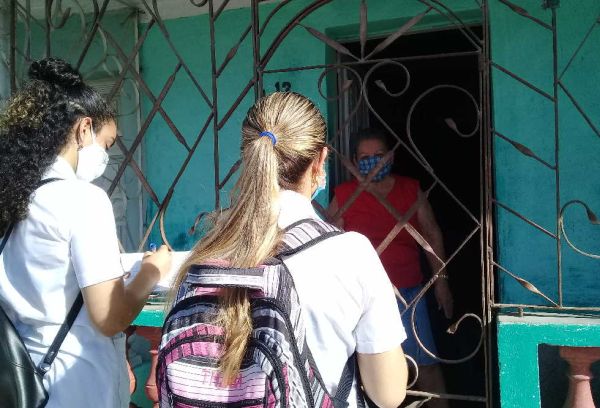
After having overcome boom of COVID-19 cases reported last year, Sancti Spiritus is currently faced with the climax of the second outbreak.
According to statistics, around twenty cases are diagnosed every day, in addition to the facts that the number of patients without known source of infection has increased along with the presence of the virus in almost every municipality of the province.
Infections have been increasing due to both the violations of the established measures and the decrease of risk perception. Escambray interviewed Provincial Health Director, Dr. Manuel Rivero Abella, to know about the complex situation of the territory.
What are the reasons for the complex epidemiological situation of the province?
The complex situation of the territory is the result, in the first place, of people indiscipline related to parties held on occasion of the February 14th commemoration. On the other hand, there were violations by many persons who were under home surveillance, which led to the incresae of transmission in the community.
People think that the number of PCR tests is still insufficient. Is that so?
It is not so. When we compare the amount of tests that are carried out against the population, we are above 0.75 percent, which is a good indicator.
Workers and patients infected with SARS-CoV-2 have been identified in health institutions of the territory. What is the situation in such institutions and in the rest of the facilities?
All the institutions were studied and the problem was solved. Only in the provincial hospital several cases were identified last week which don’t seem to be related to the institution whatsoever. We believe the infection was brought by someone from the community. Measures are being adopted to prevent similar situations in the future. We are working to raise the workers’ awareness towards the symptoms of the disease, and the surveys to identify them.
What about the violation of biosafety measures?
Reported violations of biosafety regulations have been faced with what is established by the law. I believe that the health personnel is becoming more aware of the measures, especially, those working directly with the patient. Nevertheless, there isn’t still enough perception of risk, mainly in the population and in non-health centers.
Has the delay in changing the phase in certain municipalities influenced the non-adoption of stricter measures and the complexity of the epidemiological situation?
The change of phase does not depend on the Provincial Temporary Group, but on the National Temporary Group with the assessment and indicators that we deliver to them on a daily basis. The province has adopted a group of measures from other phases despite not having a phase change, such as the limitation of transport, the reduction in the level of health activity, the decrease in mobility, especially at night. I don’t think the change of phase has influenced the situation we have today.
What are the expectations of the disease be in the coming days in the province?
Although we might be wrong, an increase is expected during the rest of this week and the beginning of the next one. Measures being adopted must lead to a decrease.
What does the control of the pandemic depend on?
It depends on three fundamental aspects. The door-to-door surveys, in the first place; second, the isolation of the people; and third, the promptness of the actions carried out in the outbreak controls. If we can do those three things right, we can cut the transmission.
 Escambray ENGLISH EDITION
Escambray ENGLISH EDITION





Escambray reserves the right to publish comments.